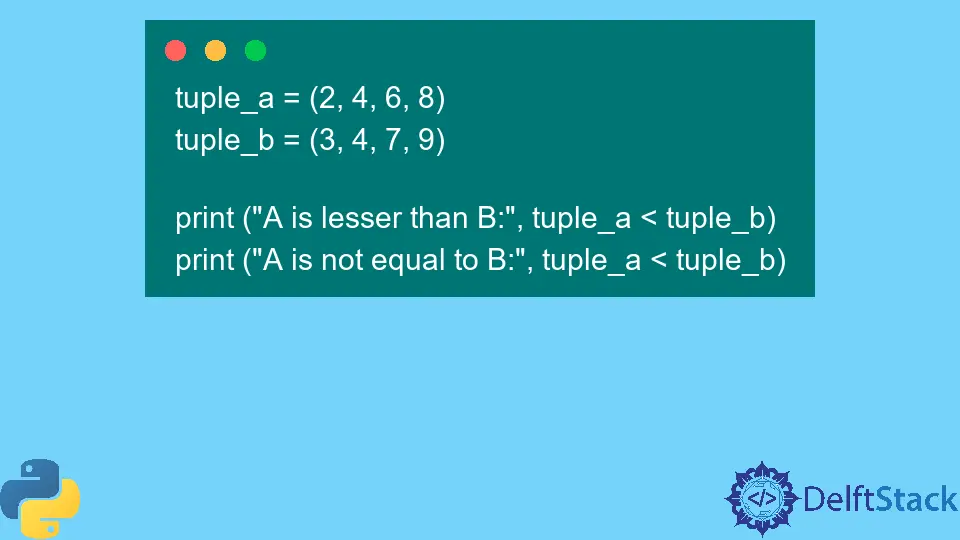Python 元組比較

本教程將介紹如何在 Python 中比較元組。
元組的比較很像字串和列表。它們從兩個元組的第一個元素開始,逐個元素進行比較。首先,它檢查兩個元素是否是相同的型別。如果是,那麼就通過值來比較它們,以確定哪個更大、哪個更小或哪個相等,這取決於操作符。
這種比較就是所謂的詞法比較。
Python 元組不等式比較
例如,確定哪一個元組更大,就會像這樣。
tuple_a = (2, 4, 6, 8)
tuple_b = (3, 4, 7, 9)
print("A is greater than B:", tuple_a > tuple_b)
輸出:
A is greater than B: False
輸出是 False,因為通過比較第一個元素(2>3),結果將是 False。比較其他剩餘的元素被忽略了,因為從第一個元素開始就有一個結論性的比較。
現在,讓我們用同樣的例子來看看其他不等式運算子的結果,小於 <,不等於!=。
tuple_a = (2, 4, 6, 8)
tuple_b = (3, 4, 7, 9)
print("A is lesser than B:", tuple_a < tuple_b)
print("A is not equal to B:", tuple_a < tuple_b)
輸出:
A is lesser than B: True
A is not equal to B: True
兩者都等於 True,因為第一個元素的比較已經是結論性的。2 小於 3,它們不相等。
Python 元組等價比較
在比較相等性時,所有元素都需要被比較為 True。如果存在不等的情況,比較將停止。
tuple_a = ("a", "b", "c", "d")
tuple_b = ("a", "b", "c", "d")
print("A is equal to B:", tuple_a == tuple_b)
輸出:
A is equal to B: True
讓我們試試不同型別的例子。宣告具有各種字串、整數和浮動的元組。
tuple_a = ("a", 7, 0.5, "John")
tuple_b = ("a", "c", 0.5, "Jane")
print("A is equal to B:", tuple_a == tuple_b)
輸出:
A is equal to B False
如果比較兩個不同型別的元素,輸出將顯示一個 False 值,而不是輸出一個異常。
在這個例子中,第一個元素是相等的,所以比較將轉移到第二個元素,它們分別是整數和字串型別。因為它們的資料型別不同,所以結果將輸出為 False。
Skilled in Python, Java, Spring Boot, AngularJS, and Agile Methodologies. Strong engineering professional with a passion for development and always seeking opportunities for personal and career growth. A Technical Writer writing about comprehensive how-to articles, environment set-ups, and technical walkthroughs. Specializes in writing Python, Java, Spring, and SQL articles.
LinkedIn